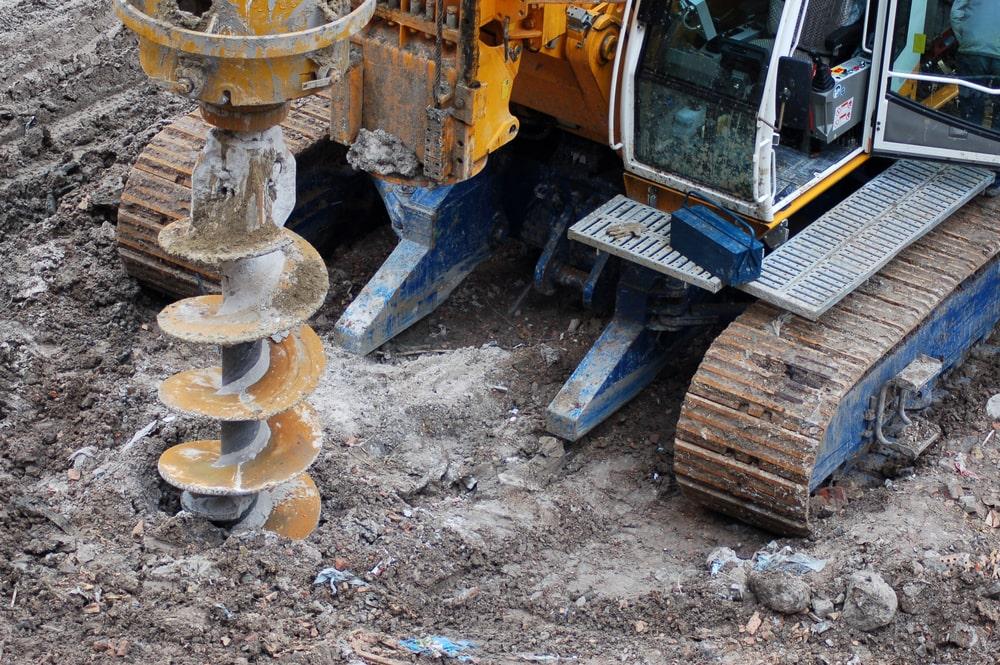A drilled well is borehole dug into the earth, with casing lining the top section or the full depth of the well. Drilling is usually done with a portable drilling equipment brought to the site to build the borehole. To progress the borehole to the required depth and to remove formation material released and suspended by the drilling bit and fluid circulation or bailing system, many procedures are utilised.

The quality of the materials used in water well drilling is critical. Casing must fulfil particular requirements and specifications because inferior pipe cannot bear driving and formation collapse pressure without causing joint damage. This type of damage might allow shallow or surface water to enter the well. Casings can be made of steel or thermoplastics, most often PVC.The casing prevents the borehole walls from collapsing and (in conjunction with other well components such as a drive shoe or grout seal) keeps surface or subsurface pollutants from accessing the water supply. The casing also houses the pumping mechanism and the conduit that transports water from the pump to the surface.
There are different well drilling technologies available, and the optimum one for your unique scenario will be determined by ground conditions and other criteria. Here’s a rundown of the most frequent well drilling techniques.
- Reverse Circulation (RC) drilling –
It is a method of drilling which uses dual wall drill rods that consist of an outer drill rod with an inner tube. These hollow inner tubes allow the drill cuttings to be transported back to the surface in a continuous, steady flow.
- Mud Rotary Drilling Method –
Fluid is pushed down the hollow drill pipe, known as the ‘kelly’, and driven out of jets in the drill bit during mud rotary drilling. That fluid then transports the cuttings, or cut materials, through the hole and to the surface, where they are reused via a mud containment system or pit.
- Air Rotary Drilling Method –
Mud rotary drilling, which was developed in the late nineteenth and early twentieth centuries, is one of the most common ways of drilling for water and oil in locations with unconsolidated formations.
Two technicians are required to carefully install the casing, with one operating the hoist and the other assisting with a rope sling. As the casing is installed, further portions are welded or screwed together.
- Down the Hole Drilling Method –
Down-the-hole drilling (DTH) is accomplished by placing a drilling hammer at the bottom of a drill string. For drilling holes, it relies on three factors: bit loading (weight), rotation, and air. These active parts work together to efficiently crush rock.
These active parts work together to efficiently crush rock. The drilling hammer is repeatedly driven into the rock while the drill string slowly spins. Compressed air drives a piston within the hammer, providing striking power. With a few exceptions, DTH drilling is best suited for hole sizes of 4–10 inches.
DTH is a desirable alternative from an environmental and social standpoint because it creates far less noise and vibration than many other drilling technologies. Because it is quieter, it is frequently the favoured drilling method in cities and inhabited regions.
- Cable Tool Drilling Method –
One of the earliest known methods of drilling for hydrocarbon fluids is cable-tool drilling. It is a type of drilling in which a hole is created by repeatedly striking rocks or subterranean formations with a hefty chisel bit. The “tool” is a hefty (typically blunt) chisel bit, and the cable might be as basic as a manila rope or numerous steel strands (wireline).
The majority of oil and gas well drilling tasks are performed by contemporary rotary rigs these days. However, cable-tool drilling is still used for drilling extremely shallow wells, particularly water wells and wells where dynamites are dropped for oil and gas exploration.
Images by Depositphotos





